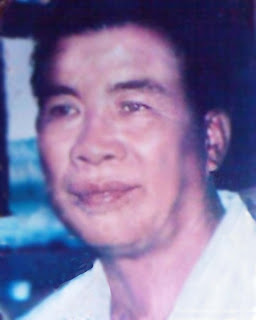

Adobe Photoshop is a graphics editing program developed and published by Adobe Systems Incorporated.
Adobe's 2003 "Creative Suite" rebranding led to Adobe Photoshop 8's renaming to Adobe Photoshop CS. Thus, Adobe Photoshop CS5 is the 12th major release of Adobe Photoshop. The CS rebranding also resulted in Adobe offering numerous software packages containing multiple Adobe programs for a reduced price. There are two versions of Photoshop: Basic and Extended, with Extended having extra features available. Adobe Photoshop Extended is included in all of Adobe's Creative Suite offerings except Design Standard, which has the Basic version.
Pictures
Photoshop has ties with other Adobe software for media editing, animation, and authoring. The .PSD (Photoshop Document), Photoshop's native format, stores an image with support for most imaging options available in Photoshop. These include layers with masks, color spaces, ICC profiles, transparency, text, alpha channels and spot colors, clipping paths, and duotone settings. This is in contrast to many other file formats (e.g. .EPS or .GIF) that restrict content to provide streamlined, predictable functionality.
Photoshop's popularity means that the .PSD format is widely used, and it is supported to some extent by most competing software. The .PSD file format can be exported to and from Adobe Illustrator, Adobe Premiere Pro, and After Effects, to make professional standard DVDs and provide non-linear editing and special effects services, such as backgrounds, textures, and so on, for television, film, and the Web. Photoshop is a pixel-based image editor, unlike programs such as Macromedia FreeHand (now defunct), Adobe Illustrator, Inkscape or CorelDraw, which are vector-based image editors.
Photoshop uses color models RGB, lab, CMYK, grayscale, binary bitmap, and duotone. Photoshop has the ability to read and write raster and vector image formats such as .EPS, .PNG, .GIF, .JPEG, and Adobe Fireworks.
New features propagating productivity include streamlined interface, improved Camera Raw, better control over print options, enhanced PDF support, and better management with Adobe Bridge. Editing tools new to CS3 are the Clone Source palette and nondestructive Smart Filters, and other features such as the brightness and contrast adjustment and Vanishing Point module were enhanced. The Black and White adjustment option improves control over manual grayscale conversions with a dialog box similar to that of Channel Mixer. Compositing is assisted with Photoshop's new Quick Selection and Refine Edge tools and improved image stitching technology.
CS3 Extended contains all features of CS3 plus tools for editing and importing some 3D graphics file formats, enhancing video, and comprehensive image analysis tools, utilizing MATLABDICOM file support. integration and
Photoshop CS4 features a new 3D engine allowing painting directly on 3D models, wrapping 2D images around 3D shapes, converting gradient maps to 3D objects, adding depth to layers and text, getting print-quality output with the new ray-tracing rendering engine. It supports common 3D formats; the new Adjustment and Mask Panels; Content-aware scaling (seam carving); Fluid Canvas Rotation and File display options. On 30 April, Adobe released Photoshop CS4 Extended, which includes all the same features of Adobe Photoshop CS4 with the addition of capabilities for scientific imaging, 3D, and high end film and video users. The successor to Photoshop CS3, Photoshop CS4 is the first 64-bit Photoshop on consumer computers (only on Windows – the OS X version is still 32-bit only.)
Photoshop CS5 was launched on April 12, 2010.In a video posted on its official Facebook page, the development team revealed the new technologies under development, including three dimensional brushes and warping tools.
A version of Adobe Photoshop CS5 Extended was used for a Prerelease Beta. A large group of selected Photoshop users were invited to beta test in mid-February 2010.
1. What is Computer Graphics?
Computer graphics are graphics created using computers and, more generally, the representation and manipulation of image data by a computer.
The development of computer graphics has made computers easier to interact with, and better for understanding and interpreting many types of data. Developments in computer graphics have had a profound impact on many types of media and have revolutionized animations , movies and the video games industry.
Graphics
Graphics are visual presentations on some surface, such as a wall, canvas, computer screen, paper, or stone to brand, inform, illustrate, or entertain. Examples are photographs, drawings, line art, graphs, diagrams, typography, numbers, symbols, geometric designs, maps, engineering drawings, or other images. Graphics often combine text, illustration, and color.
Image Type
2. 3D computer graphics
3D computer graphics in contrast to 2D computer graphics are graphics that use a three-dimensional representation of geometric data that is stored in the computer for the purposes of performing calculations and rendering 2D images. Such images may be for later display or for real-time viewing.
3. Bitmap Images and Vector Graphics.
Bitmap Image (also known as raster images) are made up of pixels in a grid. Pixels are picture elements; tiny dots of individual color that make up what you see on your screen. All these tiny dots of color come together to form the images you see. Most computer monitors display approximately 70 to 100 pixels per inch--the actual number depends on your monitor and screen settings.
Vector Image is one of the two major graphic types (the other being bitmap). Vector graphics are made up of many individual objects. Each of these objects can be defined by mathematical statements and has individual properties assigned to it such as color, fill, and outline. Vector graphics are resolution independent because they can be output to the highest quality at any scale.Vector graphics is the use of geometrical primitives such as points, lines, curves, and shapes or polygon(s), which are all based on mathematical equations, to represent images in computer graphics.
4. Computer animation
Computer animation is the art of creating moving images via the use of computers. It is a subfield of computer graphics and animation. Increasingly it is created by means of 3D computer graphics, though 2D computer graphics are still widely used for stylistic, low bandwidth, and faster real-time rendering needs. Sometimes the target of the animation is the computer itself, but sometimes the target is another medium, such as film. It is also referred to as CGI (Computer-generated imagery or computer-generated imaging), especially when used in films.
An example of Computer animation produced using Motion capture.
Concepts and principles
Image
An image or picture is an artifact that resembles a physical object or person. The term includes two-dimensional objects like photographs and sometimes includes three-dimensional representations. Images are captured by optical devices—such as cameras, mirrors, lenses, telescopes, microscopes, etc. and natural objects and phenomena, such as the human eye or water surfaces.
Pixel
Pixels are normally arranged in a regular 2-dimensional grid, and are often represented using dots or squares. Each pixel is a sample of an original image, where more samples typically provide a more accurate representation of the original. The intensity of each pixel is variable; in color systems, each pixel has typically three components such as red, green, and blue.